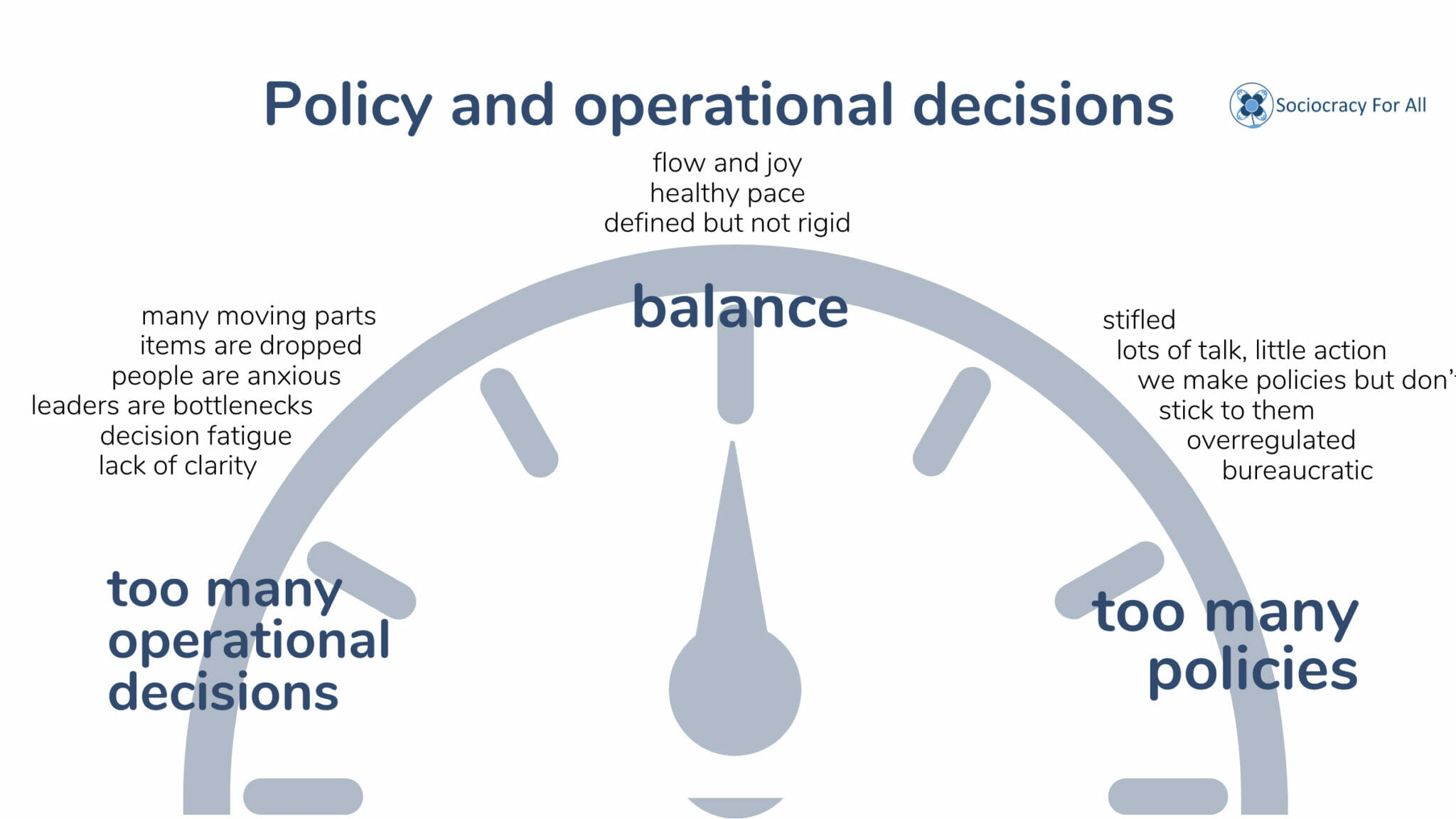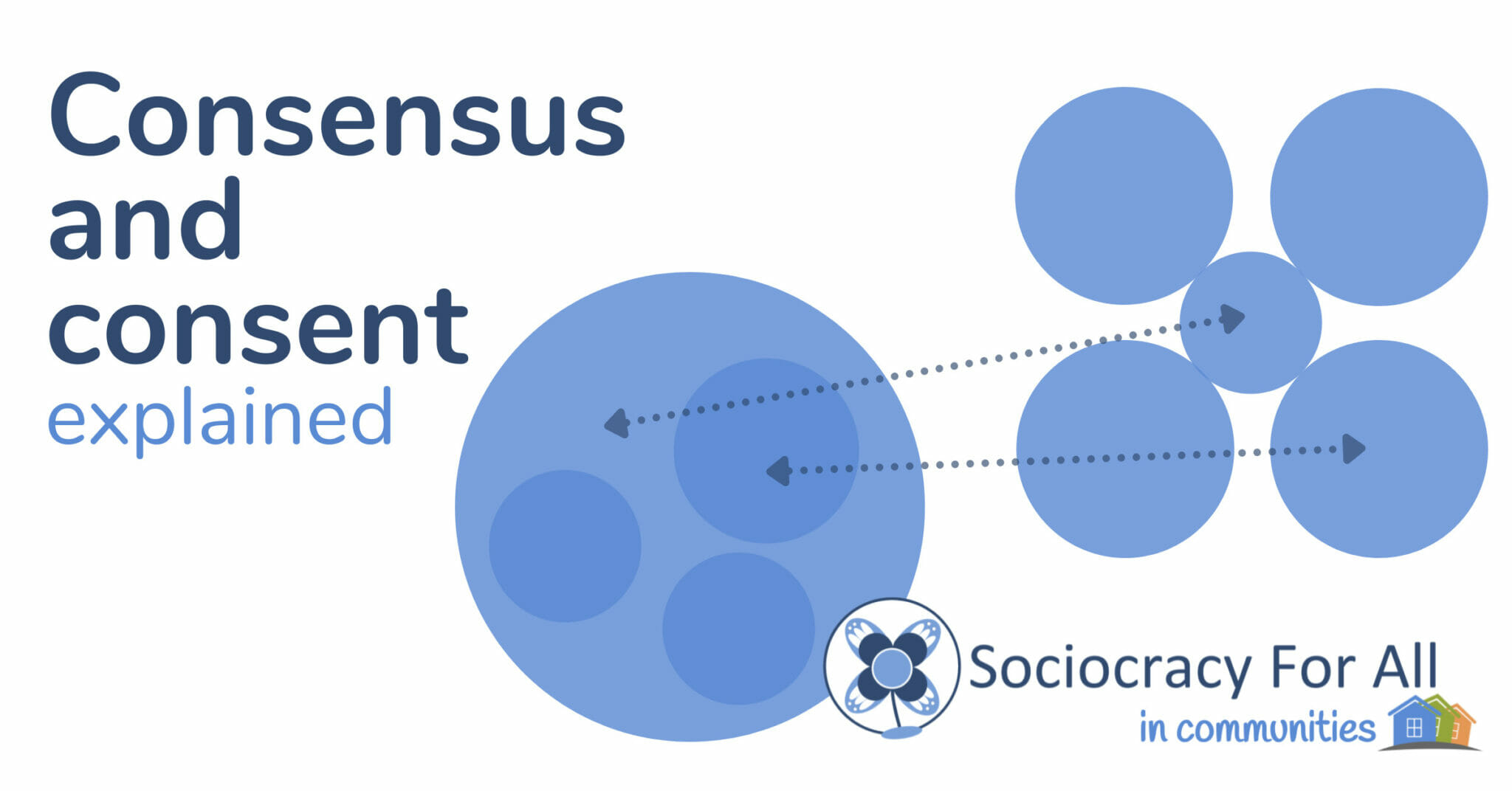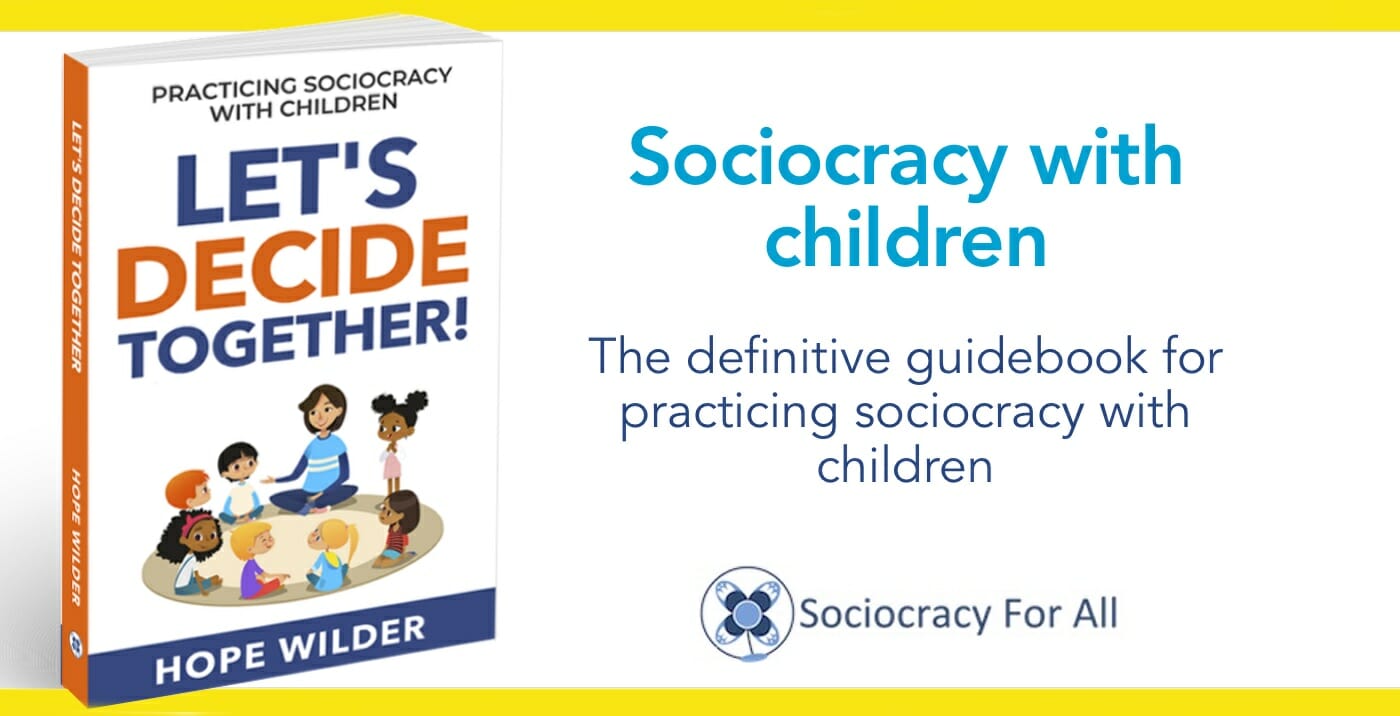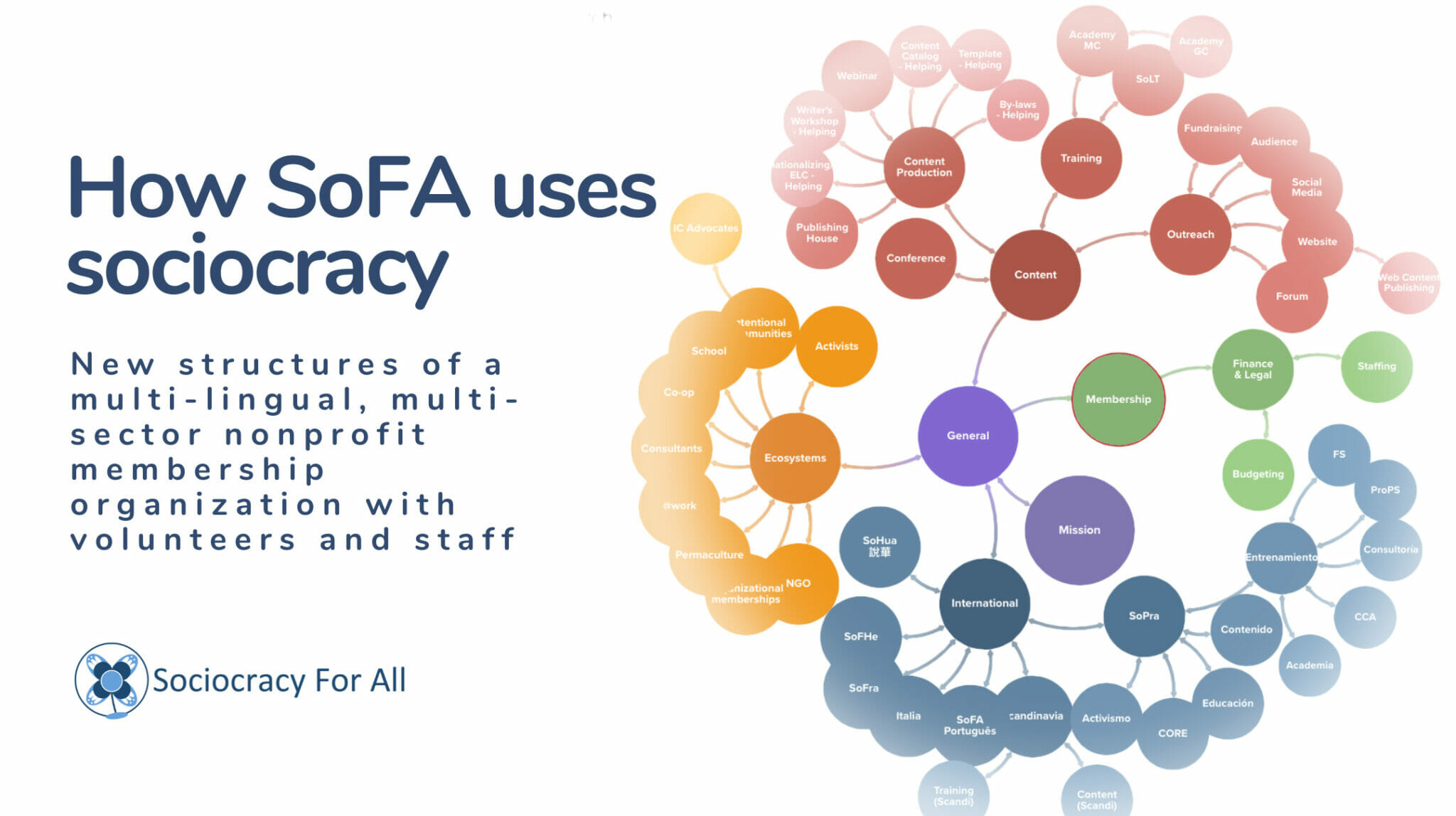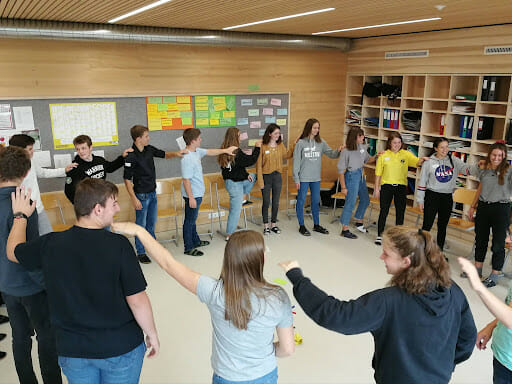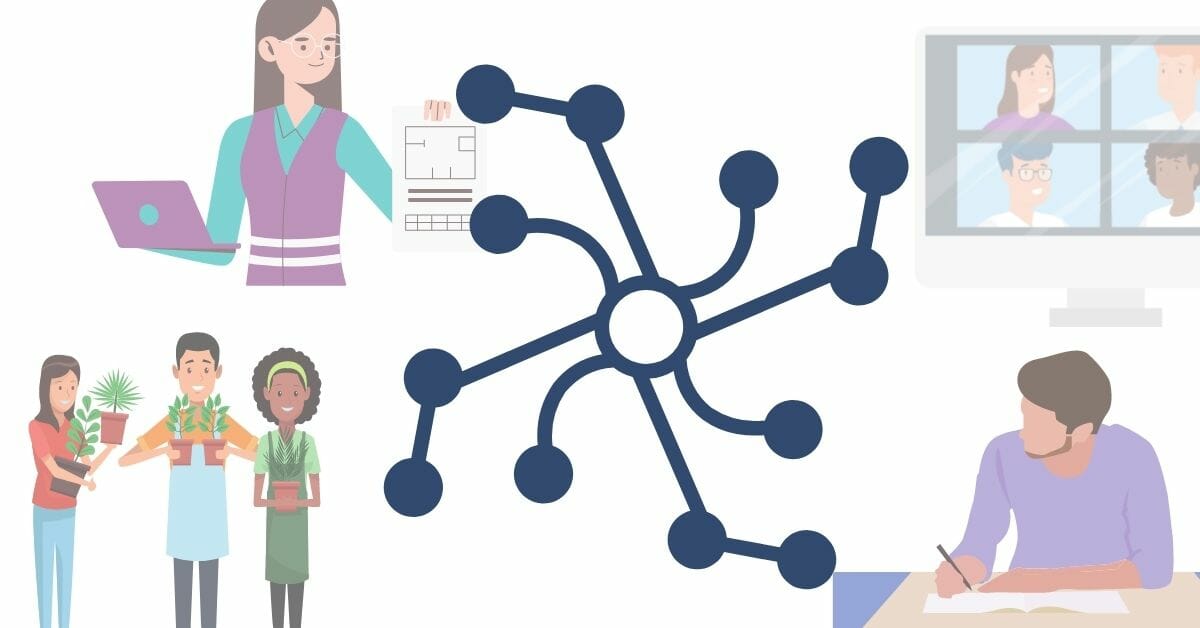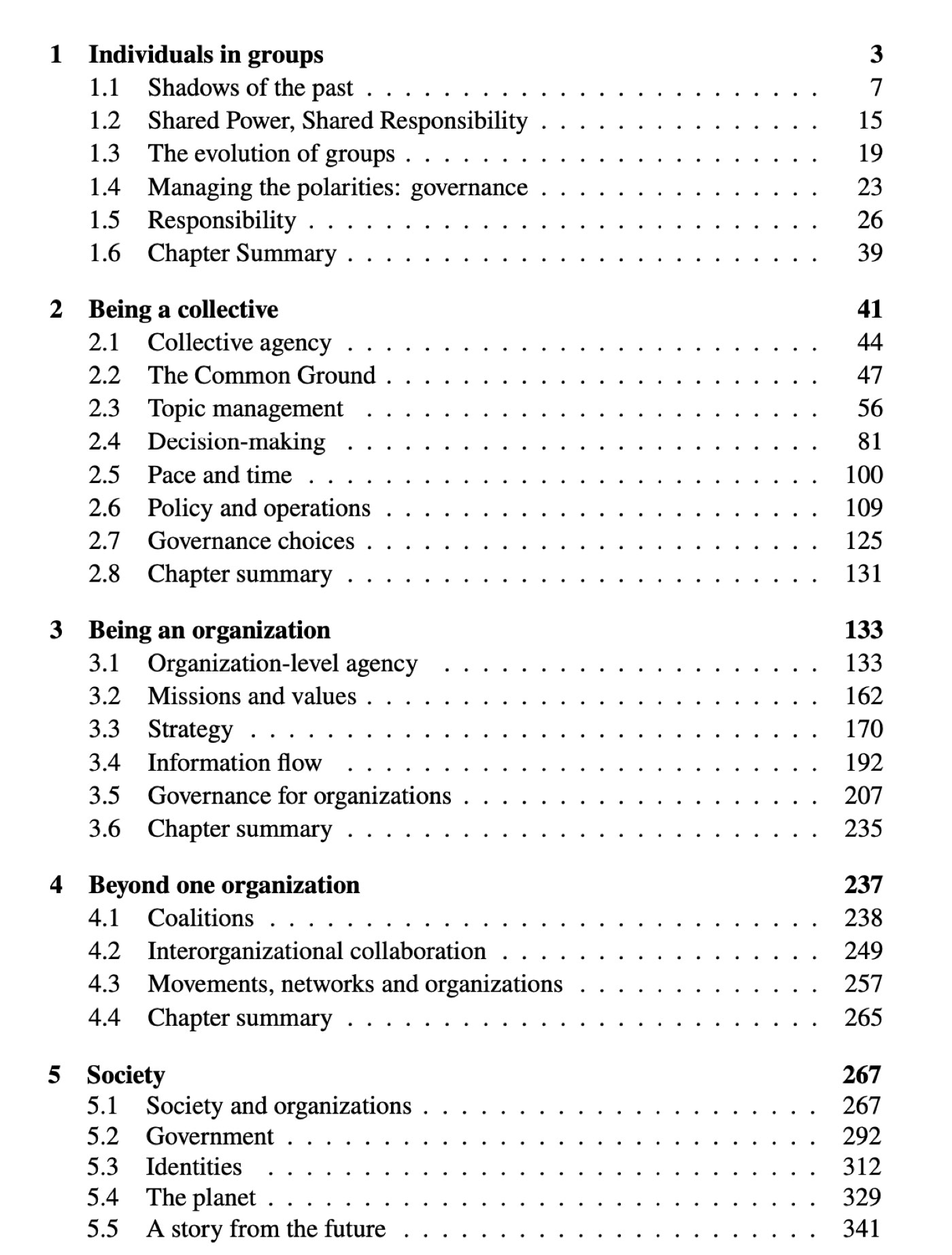Category: Delivery element
-
Policy and Operations
Collaborative decision-making can be fast and efficient if we have clear guidelines what decisions are made by groups, and what decisions can simply made by a designated person in a role.
-
Gerard Endenburg: founder of Sociocratic Circle Method and trailblazer of self-management
Endenburg and the origins of sociocracy Where did sociocracy begin? The term was first coined in 1851 by French philosopher Auguste Comte,[ to mean “the rule of the associates.” Kees […]
-
The Difference Between Whole-Group Consensus and Dynamic Governance/Sociocracy
A recurring question in our teaching is to describe the difference between consensus and consent, and between whole-group consensus and Dynamic Governance (sociocracy) used in a community or a cooperative. […]
-
Let’s Decide Together! Book Launch
Let’s Decide Together! is an accessible workbook for anyone interested in practicing sociocracy with children. Readers can use this book to make more values-aligned, egalitarian, and inclusive decisions together with […]
-
A collective permaculture mandate with sociocracy (Henny Freitas)
The Permacultural Collective Mandate of Alto Paraíso de Goiás, Brazil, was born with transparency, equivalence, efficiency, and a dynamic structure, capable of seeking unity within diversity. As a movement that seeks to keep people’s culture alive through caring for the Earth, caring for each other, and sharing knowledge and resources (human, natural and financial) fairly,…
-
How SoFA uses sociocracy (webinar recording)
How does the nonprofit Sociocracy For All use sociocracy? Our refinements added to sociocracy allow for more flexibility and better community-support. Have a look!
-
Collaboration Shapes Education and Young Leaders
by Lisa Praeg Strengthen youth leadership – Open election of class representatives as initiative Do you remember the last time you participated in a democratic election? What did you feel […]
-
What is a Help Desk?
After using sociocracy “by the book” for years and very successfully, we have started to introduce a new concept: a Help Desk circle. It introduces a small but extremely powerful nuance in what circles are and how we can decentralize decisions and operations while empowering everyone in the organization in moving things forward that they…
-
-
